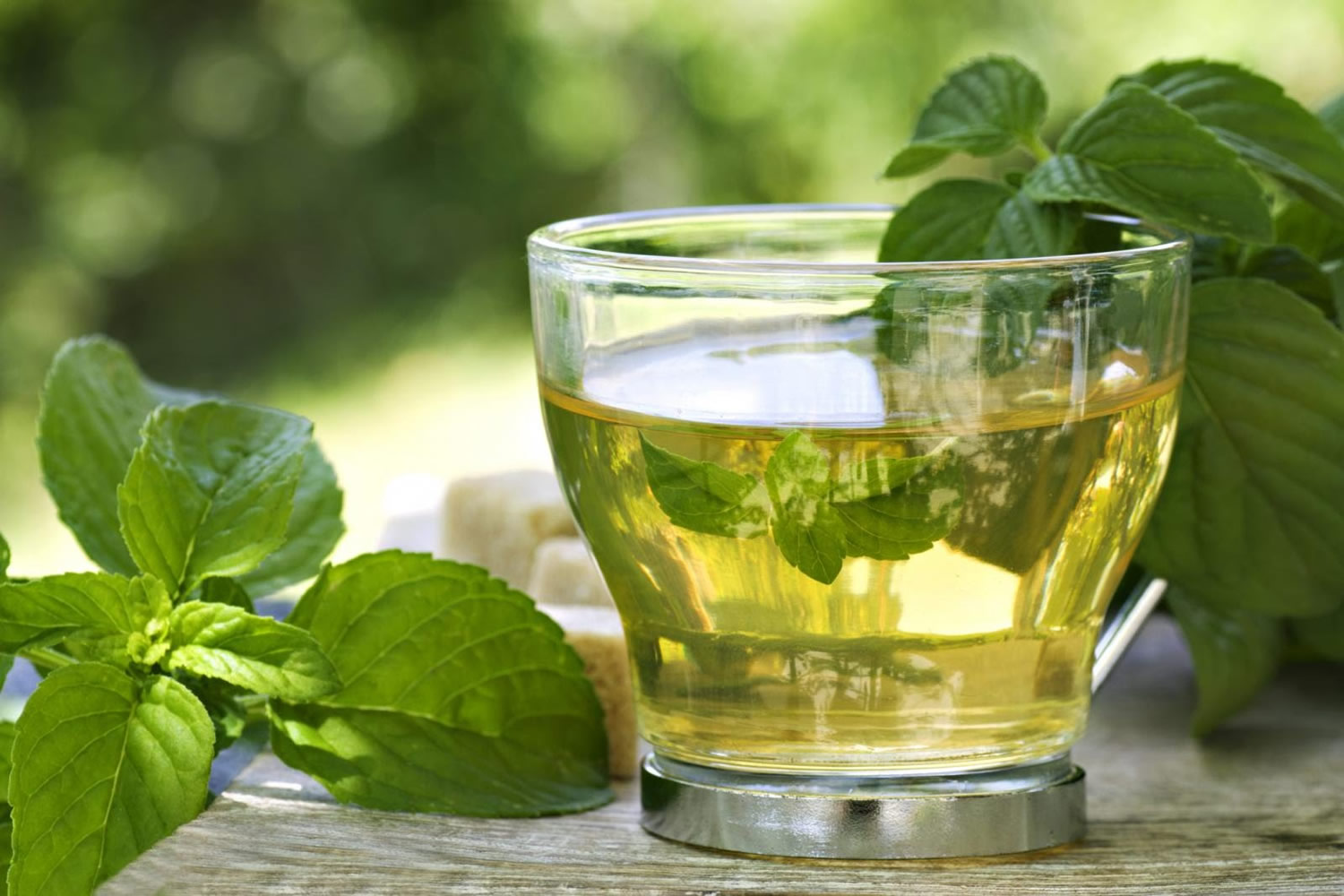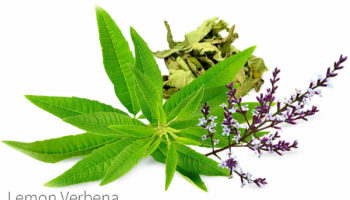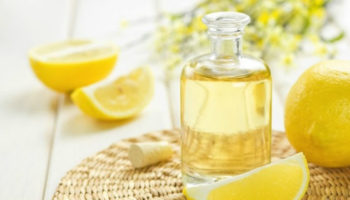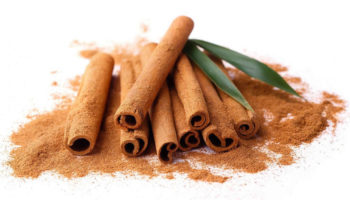What is peppermint tea good for
Peppermint (Mentha piperita L.) is one of the most widely consumed single ingredient herbal teas or tisanes 1. Peppermint tea, brewed from the plant leaves, and the essential oil of peppermint are used in traditional medicines. Peppermint is a hybrid mint, a cross between two types of mint water mint [Mentha aquatica] and spearmint [Mentha spicata L.] also known as Mentha piperita. Indigenous to Europe and the Middle East, the plant is now widespread in cultivation in many regions of the world 2. Gas chromatography–mass spectrometry analysis of Peppermint revealed the existence of menthone (25.4%), 1,8-cineole (17.7%) and menthol (12.1%) as the main components, while the essential oil contained high amounts of menthol (46.8%) and menthone (25.6%) 3.
Peppermint leaves are aromatic perennial herb cultivated in most part of the world and it is used as folk medicine and frequently used in herbal tea and for culinary purpose to add flavor and aroma 4. Best known for its flavoring and fragrance properties, peppermint leaves (fresh and dried) and the essential oil extracted from the leaves are used in many food, cosmetic and pharmaceutical products. Peppermint is used for flavoring ice cream, candy, fruit preserves, alcoholic beverages, chewing gum, toothpaste, and some shampoos, soaps and skin care products 5. The phenolic constituents of Peppermint leaves include rosmarinic acid and several flavonoids, primarily eriocitrin, luteolin and hesperidin 1. The peppermint essential oil is rich in menthol, l-menthone, pulegone, piperitone, menthol acetate, piperitenone menthone, carvone, menthofuran, isomenthone, menthyl acetate, isopulegol, menthol, 3-octanol, pulegone; hence, it also used as natural antioxidants 6, 7. The list of purported benefits and uses of peppermint as a folk remedy or in complementary and alternative medical therapy include: biliary disorders, dyspepsia, enteritis, flatulence, gastritis, intestinal colic, and spasms of the bile duct, gallbladder and gastrointestinal (GI) tract.
Today, peppermint is used as a dietary supplement for irritable bowel syndrome (IBS), other digestive problems, the common cold, headaches, and other conditions. Peppermint oil is also used topically (applied to the skin) for headache, muscle aches, itching, and other problems. Peppermint leaf is available in teas, capsules, and as a liquid extract. Peppermint oil is available as liquid solutions and in capsules, including enteric-coated capsules.
Figure 1. Peppermint
How to make peppermint tea
Wash and tear up the fresh peppermint leaves. Put them in a French press or teapot and pour some boiling water over them.
Directions:
- Boil about 3 or 4 cups of water.
- Add the peppermint leaves and shut the heat off.
- Let the tea steep for about 5 minutes, depending on how strong you want your tea.
- Pour through a tea strainer.
- Add the honey and pour into cups.
- The tea can be made from fresh leaves or dried leaves.
Does peppermint tea have caffeine ?
No, peppermint leaves have no caffeine. See Table 1 below.
The chemical components of peppermint leaves and oil vary with plant maturity, variety, geographical region and processing conditions 8.
Table 1. Peppermint (fresh) nutrition facts
| Nutrient | Unit | Value per 100 g | |||||||||
| Approximates | |||||||||||
| Water | g | 78.65 | |||||||||
| Energy | kcal | 70 | |||||||||
| Energy | kJ | 293 | |||||||||
| Protein | g | 3.75 | |||||||||
| Total lipid (fat) | g | 0.94 | |||||||||
| Ash | g | 1.76 | |||||||||
| Carbohydrate, by difference | g | 14.89 | |||||||||
| Fiber, total dietary | g | 8 | |||||||||
| Minerals | |||||||||||
| Calcium, Ca | mg | 243 | |||||||||
| Iron, Fe | mg | 5.08 | |||||||||
| Magnesium, Mg | mg | 80 | |||||||||
| Phosphorus, P | mg | 73 | |||||||||
| Potassium, K | mg | 569 | |||||||||
| Sodium, Na | mg | 31 | |||||||||
| Zinc, Zn | mg | 1.11 | |||||||||
| Copper, Cu | mg | 0.329 | |||||||||
| Manganese, Mn | mg | 1.176 | |||||||||
| Vitamins | |||||||||||
| Vitamin C, total ascorbic acid | mg | 31.8 | |||||||||
| Thiamin | mg | 0.082 | |||||||||
| Riboflavin | mg | 0.266 | |||||||||
| Niacin | mg | 1.706 | |||||||||
| Pantothenic acid | mg | 0.338 | |||||||||
| Vitamin B-6 | mg | 0.129 | |||||||||
| Folate, total | µg | 114 | |||||||||
| Folic acid | µg | 0 | |||||||||
| Folate, food | µg | 114 | |||||||||
| Folate, DFE | µg | 114 | |||||||||
| Vitamin B-12 | µg | 0 | |||||||||
| Vitamin A, RAE | µg | 212 | |||||||||
| Retinol | µg | 0 | |||||||||
| Vitamin A, IU | IU | 4248 | |||||||||
| Vitamin D (D2 + D3) | µg | 0 | |||||||||
| Vitamin D | IU | 0 | |||||||||
| Lipids | |||||||||||
| Fatty acids, total saturated | g | 0.246 | |||||||||
| 14:00:00 | g | 0.006 | |||||||||
| 16:00:00 | g | 0.176 | |||||||||
| 18:00:00 | g | 0.025 | |||||||||
| Fatty acids, total monounsaturated | g | 0.033 | |||||||||
| 16:1 undifferentiated | g | 0.002 | |||||||||
| 18:1 undifferentiated | g | 0.029 | |||||||||
| Fatty acids, total polyunsaturated | g | 0.508 | |||||||||
| 18:2 undifferentiated | g | 0.069 | |||||||||
| 18:3 undifferentiated | g | 0.435 | |||||||||
| Fatty acids, total trans | g | 0 | |||||||||
| Cholesterol | mg | 0 | |||||||||
| Phytosterols | mg | 13 | |||||||||
| Amino Acids | |||||||||||
| Tryptophan | g | 0.058 | |||||||||
| Threonine | g | 0.154 | |||||||||
| Isoleucine | g | 0.154 | |||||||||
| Leucine | g | 0.281 | |||||||||
| Lysine | g | 0.161 | |||||||||
| Methionine | g | 0.053 | |||||||||
| Cystine | g | 0.041 | |||||||||
| Phenylalanine | g | 0.191 | |||||||||
| Tyrosine | g | 0.113 | |||||||||
| Valine | g | 0.187 | |||||||||
| Arginine | g | 0.173 | |||||||||
| Histidine | g | 0.075 | |||||||||
| Alanine | g | 0.195 | |||||||||
| Aspartic acid | g | 0.443 | |||||||||
| Glutamic acid | g | 0.409 | |||||||||
| Glycine | g | 0.18 | |||||||||
| Proline | g | 0.154 | |||||||||
| Serine | g | 0.146 | |||||||||
| Flavanones | |||||||||||
| Eriodictyol | mg | 30.9 | |||||||||
| Hesperetin | mg | 10.2 | |||||||||
| Flavones | |||||||||||
| Apigenin | mg | 5.4 | |||||||||
| Luteolin | mg | 12.7 | |||||||||
| Flavonols | |||||||||||
| Isorhamnetin | mg | 0 | |||||||||
| Kaempferol | mg | 0 | |||||||||
| Quercetin | mg | 0 | |||||||||
Health benefits of peppermint tea
In Germany, peppermint leaf is licensed for use as a standard medicinal tea to treat dyspepsia. The German Commission E has also approved the internal use of the leaf for spastic complaints of the GI tract, gallbladder and bile ducts 10. Peppermint oil is approved for internal use in the event of spastic discomfort of the upper GI tract and bile ducts, irritable colon or irritable bowel syndrome (IBS), catarrahs of the respiratory tract and inflammation of the oral mucosa. Externally, the use of peppermint oil is approved for myalgia and neuralgia. With the exception of peppermint oil and IBS, studies providing evidence to either support or refute the applicability of peppermint as a treatment for many of these conditions in humans is somewhat limited (see Table 2).
Table 2. Human studies examining the effects of orally ingested peppermint leaves (Mentha piperita)
| Reference | Delivery method | Subjects | Dose | Duration | Outcome |
| 11 | Tablet | 70 patients with chronic dyspepsia | 2 tablets (containing 100 mg peppermint plus other herbs) 3 times/day | 14 days | Relief of symptoms after 1 week in treatment group compared or placebo with baseline. No change in placebo group. |
| 12 | Encapsulated powder | 60 patients with functional dyspepsia (25–70 years) | Daily consumption of herbal mixture containing peppermint or placebo | 4 weeks | Improved GI symptom score |
| 13 | Tablet | 12 patients with idiopathic dyspepsia | 3, 6, or 9 tablets (containing 100 mg peppermint plus other herbs) after a meal | 1 time | 3 tablets were sufficient to reduce acute GI symptoms |
Peppermint tea and peppermint oil toxicity and side effects
Toxicology studies of peppermint oil and its components have been performed in animals. Histopathological changes in the white matter of the cerebellum were seen in rats (n = 20) given peppermint oil at doses of 40 and 100 mg/kg orally for 28 days, but no adverse effects were observed at 10 mg/kg 14. No adverse effects were observed at 10 mg/kg. In a comparable 90 day rat study (n = 28), cyst-like spaces in the white matter of the cerebellum and hyaline droplets in the proximal tubules of the kidneys were observed in the highest dose group only 15. Interestingly, the extension of the cyst-like spaces was not aggravated with prolonged dosing in this study. Menthol administered to rats by gavage at 200, 400 and 800 mg/kg for 28 days significantly increased absolute and relative liver weights and the vacuolization of hepatocytes at all doses, although no sign of encephalopathy was observed 16. At 80 and 160 mg/kg, pulegone administered for 28 days induced atonia, decreased blood creatinine levels, lowered body weight and caused histopathological changes in the liver and white matter of the cerebellum 16. No adverse effects were observed with 20 mg/kg pulegone. Menthone given orally to rats (n = 20) at 200, 400 and 800 mg/kg for 28 days decreased creatinine and increased alkaline phosphatase in a dose-dependent manner, increased bilirubin and liver and spleen weights, and also caused histopathological changes in the white matter of the cerebellum in the two highest dose groups 17. The accumulation of protein droplets containing α2μ-globulin in proximal tubular epithelial cells of rats (n = 10/group) was observed after the administration of either 500–1000 mg/kg 1,8-cineole or 800–1600 mg/kg limonene for 28 days, however, no histopathological changes were observed in the brain 18.
- A study on diet and the development of gastroesophageal reflux disease (GERD) 19 found that frequent consumption of peppermint tea was a risk factor for the development of gastroesophageal reflux disease (GERD). Gastroesophageal reflux disease (GERD) is a chronic gastrointestinal disease that significantly reduces quality of life and, in some patients, leads to serious complications, such as oesophageal stricture, gastrointestinal bleeding, or Barrett’s oesophagus. According to various sources, the typical symptoms of this disease (heartburn, discomfort in the upper abdomen, acid eructation) are experienced daily by 4–10%, and weekly by 10–30% of the adult population in Western countries 20. Literature sources suggest that peppermint decreases lower esophageal sphincter (LES) tension; moreover, peppermint oil (studied in animal models) relaxes the smooth muscles of the alimentary tract 21. Oliveria et al. 22 found that 8% of heartburn patients reported complaints after consuming peppermint. In contrast, Terry et al. 23 and Bulat et al. 24 did not observe any effect of consuming products and beverages with peppermint on reflux episodes. This issue requires further research. Nevertheless, it is advisable to inform the patients that peppermint infusion is not always a recommended method of soothing stomach complaints.
- The long-term safety of consuming large amounts of peppermint leaf is currently unknown.
- Although peppermint is commonly available as an herbal supplement, there are no established, consistent manufacturing standards for it, and some peppermint products may be contaminated with toxic metals or other substituted compounds.
- Peppermint oil appears to be safe when taken orally (by mouth) in the doses commonly used. Excessive doses of peppermint oil can be toxic.
- Short-term and sub-chronic peppermint oil oral studies reported cystlike lesions in the cerebellum in rats that were given doses of Peppermint Oil containing pulegone, pulegone alone, or large amounts (>200 mg/kg/day) of menthone. Pulegone is also a recognized hepatotoxin 25.
- Possible side effects of peppermint oil include allergic reactions and heartburn. Capsules containing peppermint oil are often enteric-coated to reduce the likelihood of heartburn. If enteric-coated peppermint oil capsules are taken at the same time as antacids, the coating can break down too quickly.
- Like other essential oils, peppermint oil is highly concentrated. When the undiluted essential oil is used for health purposes, only a few drops are used.
- Side effects of applying peppermint oil to the skin can include skin rashes and irritation. Repeated intradermal dosing with Peppermint Oil produced moderate and severe reactions in rabbits, although Peppermint Oil did not appear to be phototoxic. Peppermint oil should not be applied to the face or chest of infants or young children because serious side effects may occur if they inhale the menthol in the oil.
A review on the use of peppermint oil, leaf extract, leaf and leaf water in cosmetic formulations by Nair 26 concluded that each are considered safe, although the concentration of pulegone in products containing these ingredients should be limited to 1%. Although the toxicity of menthol is considered to be low, it has the ability to enhance the penetration and absorption of other agents contained in some formulations, thereby increasing the effective dose of these agents at the indicated intake. A few case study reports have described contact sensitivities to peppermint oil and its components in topical and oral preparations 27, 28, but a patch test study of 4000 patients by Kanerva et al. 29 found that menthol and peppermint oil provoked neither allergic nor irritant reactions.
Akdogan et al. 30 reported increased follicle stimulating hormone (FSH) and luteinizing hormone (LH) levels and decreased testosterone levels in rats given 20 g/L peppermint tea in place of their drinking water. As opposed to spearmint tea, the only effect of peppermint on testicular tissue was segmental maturation arrest in the semniferous tubules. There are no chronic toxicity studies of peppermint in humans, although the German Commission E 31 reports that the use of peppermint oil is contraindicated in patients with bile duct, gallbladder and liver disorders. Caution is also recommended for the use of peppermint oil capsules in patients with GI reflux, hiatal hernia or kidney stones.
References- McKay, D. L. and Blumberg, J. B. (2006), A review of the bioactivity and potential health benefits of peppermint tea (Mentha piperita L.) . Phytother. Res., 20: 619–633. doi:10.1002/ptr.1936 http://onlinelibrary.wiley.com/doi/10.1002/ptr.1936/pdf
- Sun Z, Wang H, Wang J, Zhou L, Yang P. Chemical Composition and Anti-Inflammatory, Cytotoxic and Antioxidant Activities of Essential Oil from Leaves of Mentha piperita Grown in China. Pizzo SV, ed. PLoS ONE. 2014;9(12):e114767. doi:10.1371/journal.pone.0114767. https://www.ncbi.nlm.nih.gov/pmc/articles/PMC4262447/
- Comparative Chemical Analysis of Mentha piperita and M. spicata and a Fast Assessment of Commercial Peppermint Teas. Buleandra M, et al. Nat Prod Commun. 2016. https://www.ncbi.nlm.nih.gov/m/pubmed/27396216/
- Antimicrobial screening of Mentha piperita essential oils. Işcan G, Kirimer N, Kürkcüoğlu M, Başer KH, Demirci F. J Agric Food Chem. 2002 Jul 3; 50(14):3943-6. https://www.ncbi.nlm.nih.gov/pubmed/12083863/
- http://oregonstate.edu/dept/coarc/peppermint-0
- Mohaddese M, Kazempour N. Chemical composition and antimicrobial activity of peppermint (Mentha piperita L.) Essential oil. Songklanakarin J Sci Technol. 2014;36:1.
- Skalicka-Woz´niak K, Walasek M. Preparative separation of menthol and pulegone from peppermint oil (Mentha piperita L.) by high performance counter current chromatography. Phytochem Lett. 2014;10:xciv–viii.
- Ruiz del Castillo ML, Santa-Maria G, Herraiz M, Blanch GP. 2003. A comparative study of the ability of different techniques to extract menthol from Mentha piperita. J Chromatogr Sci 41: 385–389.
- United States Department of Agriculture Agricultural Research Service. National Nutrient Database for Standard Reference Release 28. https://ndb.nal.usda.gov/ndb/search/list
- Blumenthal M, Busse WR, Goldberg A et al.(eds). 1998. The Complete German Commission E Monographs – Therapeutic Guide to Herbal Medicines. American Botanical Council: Austin.
- Westphal J, Horning M, Leonhardt K. 1996. Phytotherapy in functional upper abdominal complaints. Results of a clinical study with a preparation of several plants. Phytomedicine 2: 285–291.
- Madisch A, Melderis H, Mayr G, Sassin I, Hotz J. 2001. Commercially available herbal preparation and its modified dispense in patients with functional dyspepsia. Results of a double-blind, placebo-controlled, randomized multicenter trial. Z Gastroenterol 39: 511–517
- Uehleke B, Silberhorn H, Wohling H. 2002. A plant cocktail soothes upset stomachs. MMW Fortschr Med 144: 695.
- Thorup I, Wurtzen G, Carstensen J, Olsen P. 1983a. Short term toxicity study in rats dosed with peppermint oil. Toxicol Lett 19: 211–215.
- Spindler P, Madsen C. 1992. Subchronic toxicity study of peppermint [Mentha piperita and Mentha arvensis] oil in rats. Toxicol Lett 62: 215–220.
- Thorup I, Wurtzen G, Carstensen J, Olsen P. 1983b. Short term toxicity study in rats dosed with pulegone and menthol. Toxicol Lett 19: 207–210.
- Madsen C, Wurtzen G, Carstensen J. 1986. Short-term toxicity study in rats dosed with menthone. Toxicol Lett 32: 147–152.
- Kristiansen E, Madsen C. 1995. Induction of protein droplet (alpha 2 mu-globulin) nephropathy in male rats after short-term dosage with 1,8-cineole and l-limonene. Toxicol Lett 80: 147–152.
- Jarosz M, Taraszewska A. Risk factors for gastroesophageal reflux disease: the role of diet. Przegla̜d Gastroenterologiczny. 2014;9(5):297-301. doi:10.5114/pg.2014.46166. https://www.ncbi.nlm.nih.gov/pmc/articles/PMC4223119/
- Gastroesophageal reflux among different racial groups in the United States. El-Serag HB, Petersen NJ, Carter J, Graham DY, Richardson P, Genta RM, Rabeneck L. Gastroenterology. 2004 Jun; 126(7):1692-9. https://www.ncbi.nlm.nih.gov/pubmed/15188164/
- GERD pathogenesis, pathophysiology, and clinical manifestations. Kahrilas PJ. Cleve Clin J Med. 2003 Nov; 70 Suppl 5():S4-19. https://www.ncbi.nlm.nih.gov/pubmed/14705378/
- Heartburn risk factors, knowledge, and prevention strategies: a population-based survey of individuals with heartburn. Oliveria SA, Christos PJ, Talley NJ, Dannenberg AJ. Arch Intern Med. 1999 Jul 26; 159(14):1592-8. https://www.ncbi.nlm.nih.gov/pubmed/10421282/
- Reflux-inducing dietary factors and risk of adenocarcinoma of the esophagus and gastric cardia. Terry P, Lagergren J, Wolk A, Nyrén O. Nutr Cancer. 2000; 38(2):186-91. https://www.ncbi.nlm.nih.gov/pubmed/11525596/
- Lack of effect of spearmint on lower oesophageal sphincter function and acid reflux in healthy volunteers. Bulat R, Fachnie E, Chauhan U, Chen Y, Tougas G. Aliment Pharmacol Ther. 1999 Jun; 13(6):805-12. https://www.ncbi.nlm.nih.gov/pubmed/10383511/
- Final report on the safety assessment of Mentha Piperita (Peppermint) Oil, Mentha Piperita (Peppermint) Leaf Extract, Mentha Piperita (Peppermint) Leaf, and Mentha Piperita (Peppermint) Leaf Water. Int J Toxicol. 2001;20 Suppl 3:61-73. https://www.ncbi.nlm.nih.gov/pubmed/11766133
- Nair B. 2001. Final report on the safety assessment of Mentha piperita (peppermint) oil, Mentha piperita (peppermint) leaf extract, Mentha piperita (peppermint) leaf, and Mentha piperita (peppermint) leaf water. Int J Toxicol 20: 61–73
- Morton CA, Garioch J, Todd P, Lamey PJ, Forsyth A. 1995. Contact sensitivity to menthol and peppermint in patients with intra-oral symptoms. Contact Dermatitis 32: 281–284.
- Bonamonte D, Mundo L, Daddabbo M, Foti C. 2001. Allergic contact dermatitis from Mentha spicata (spearmint). Contact Dermatitis 45: 298.
- Kanerva L, Rantanen T, Aalto-Korte K et al. 2001. A multicenter study of patch test reactions with dental screening series. Am J Contact Dermat 12: 83– 87.
- Akdogan M, Ozguner M, Kocak A, Oncu M, Cicek E. 2004c. Effects of peppermint teas on plasma testosterone, follicle-stimulating hormone, and luteinizing hormone levels and testicular tissue in rats. Urology 64: 394–398.
- Blumenthal M, Busse WR, Goldberg A et al. (eds). 1998. The Complete German Commission E Monographs – Therapeutic Guide to Herbal Medicines. American Botanical Council: Austin.






